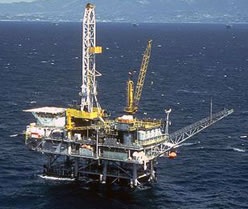
Fishermen operating in six coastal communities in the Western Region -- namely Sekondi-Takoradi, Ahanta West, Nzema East, Shama, Ellembelle and Jomoro -- have expressed worry over how the Environmental Impact Assessment (EIA) for the TEN project was conducted since their inputs were not sought.
According to the fishermen, most of them were not invited to make an input into an EIA undertaken by an Environmental Resource Management (ERM) in collaboration with two Accra-based consultancies, namely ESL consulting and SRC consulting -- jointly referred to as the EIA team.
“As part of the developmental process, there is a need for public consultation for our inputs during the whole process. It has been stated in the project’s Environmental Impact Statement (EIS) that some chief fishermen are part of the EIA process; we think the exercise should have been open to all fishermen," said one of the fishermen.
The fishermen feel that since offshore petroleum activities affect their means of livelihood, a comprehensive environmental impact assessment could not be said to have concluded without their input.
At a forum organised by the Western Region Network of NGOs (WERENGO) Takoradi, the frustrated fishermen called for their views to be considered in the EIA.
Mr. Kwame Mensah, the Director of WERENGO, explained that as part of the EIA process, the NGO was asked to submit concerns and recommendations to the Environmental Protection Agency.
“Through this, we visited some fishing communities and a number of issues were raised such as not being invited to make an input, untreated ballast water which is released into Ghana’s ocean, vessels and other installations in the TEN field that attract fish to the area which is not accessible to the fishermen,” he added.
TEN is a new project by Tullow Oil and its partners, Kosmos Energy, Anadarko, Ghana National Petroleum Corporation (GNPC) and Sabre Oil and Gas.
The project involves the development of the Tweneboa, Enyera (originally named Owo) and Ntomme (TEN) exploration wells, situated approximately 20 kilometres to the west of the Jubilee Field and lie in water depths ranging between 1,000 metres and 2,000 metres is the second major hydrocarbon development offshore after the Jubilee Field development in 2009/2010.
First production from the US$4.5million project is expected in the first quarter of 2015, and a peak production rate of 100,000 barrels of oil per day is expected by 2018.